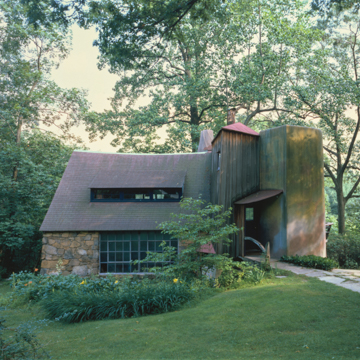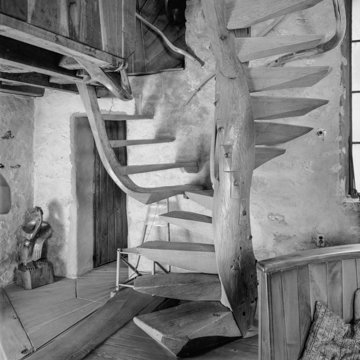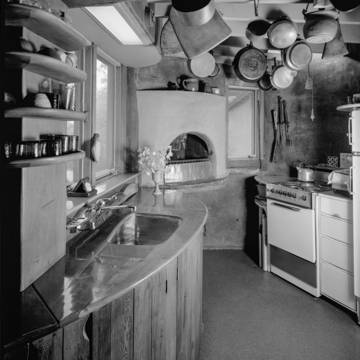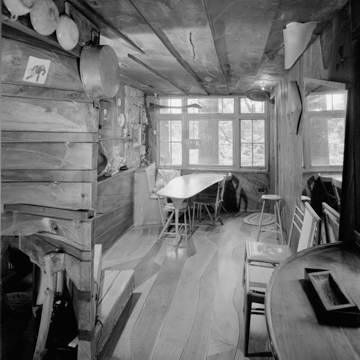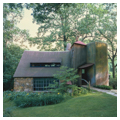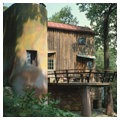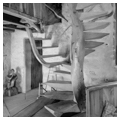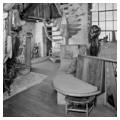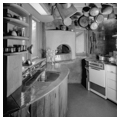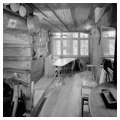A native of Philadelphia, Wharton Esherick attended the Philadelphia Museum School (now the University of the Arts; PH60) and shifted to the Pennsylvania Academy of the Fine Arts (
PH52) (before its summer program began at nearby Yellow Springs; CH33) with the intention of a career in painting. In 1913, stimulated by reading Henry David Thoreau's Walden and in an effort to reject the corporate world of Philadelphia industry, Esherick purchased an abandoned house on the edge of a quarry as a workplace and home. A teaching job at the Single-Tax enclave of Fairhope, Alabama, led to connections with the local Arts and Crafts community at Rose Valley (
DE26), where he encountered Jasper Deeter, director of Rose Valley's Hedgerow Theater (
DE26.2). That experience stimulated Esherick to turn
You are here
Wharton Esherick House and Studio
1926 and later, Wharton Esherick; 1955–1956, Louis I. Kahn. 1520 Horseshoe Trail, 5 miles south of Phoenixville
If SAH Archipedia has been useful to you, please consider supporting it.
SAH Archipedia tells the story of the United States through its buildings, landscapes, and cities. This freely available resource empowers the public with authoritative knowledge that deepens their understanding and appreciation of the built environment. But the Society of Architectural Historians, which created SAH Archipedia with University of Virginia Press, needs your support to maintain the high-caliber research, writing, photography, cartography, editing, design, and programming that make SAH Archipedia a trusted online resource available to all who value the history of place, heritage tourism, and learning.







